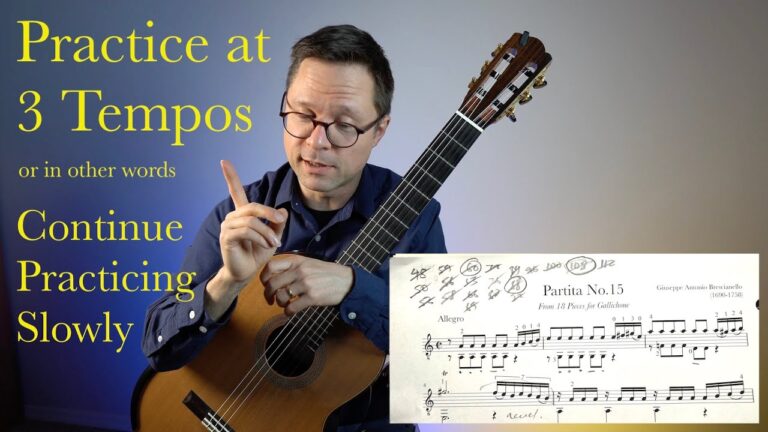I read an interesting section from Art of Classical Guitar Playing (Amazon link) by Charles Duncan earlier today. It was on “The Principle of Functional Tension” and was aimed at dispelling the vague notion of “relaxation” in music. Instead, the author outlines two types of tension:
Dysfunctional Tension: largely involuntary and therefore hard to control. Causes: performance anxiety, superfluous muscle activity; also psychological in nature. There are numerous physiological aspects, everything from non-ergonomic positions, excessive pressure, uncontrolled extraneous tension, teeth clenching, torso swaying…
Functional Tension: good coordination, voluntary tension, directed and focused tension, refinement of technique. Essentially, functional tension accounts for the interconnectivity of muscles in the body and aims to restrict the energy expended to the smallest amount consistent with the musical requirement.
He then dives into an array of examples, of which I’ll leave you to read on your own. He concludes, however, that:
As an underlying concept of technique, “relaxation” is too vague to be useful – that is, unless the term is used much more precisely than in any broad exhortation to “play relaxed.”
So, the key to relaxation is a mix of command over technique as well as other physiological and psychologically healthy principles. I like the quote he included from the great piano teacher Arnold Schultz:
How did the word “relaxation” ever gain such tremendous currency in modern pedagogy?… I believe that a general misunderstanding of the significance of a highly coordinated movement is the best explanation… A highly coordinated movement is one which fulfills certain mechanical requirements with a minimal expenditure of physiological energy. This economy of energy, however, is the result of good coordination, not the cause. The relaxation school of piano technique has mistaken the result for the cause, and has sought to produce good coordination by economizing energy. It is not an unusual error in kind. (source: The Riddle of the Pianist’s Finger, pg. 28)
It’s a good reminder to me to define relaxation as I tell my students to relax while they play. It’s more a complicated and finely balanced art to relax while also having control. This makes me want to go practice, but first let’s view some playing:
This is An Malvina by Johann Kaspar Mertz played by the great Matthew McAllister via his YouTube channel. If you watch McAllister’s movements you’ll see a connection between his wonderful musicality and his body movements. He has what I would call a dynamic control over tension and it’s always functional. It’s dynamic because he moves in and out of functional tension and never ‘locks’ into a static position.
Video Link/Source: http://youtu.be/zwQj1wgr8mg




